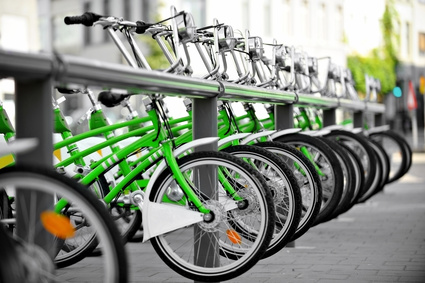Designing an Optimal Bicycle Parking Facility
The Australian Government is encouraging citizens to use bicycles, as it’s a sustainable mode of transport with evident economic, environmental and health benefits. In fact, government bodies have passed a mandate to include bicycle-friendly spaces in new developments. Consequently, developers, city planners, and architects need to first design an optimal bicycle parking layout. This is where a traffic engineering expert, such as EB Traffic Solutions, can help. To give you an overview of all that’s involved, this blog post highlights the various factors to consider, when designing a bicycle parking layout.
Number and Class of Bicycle Parking Spaces
The first step is classifying the bicycle parking space according to the level of security, which the local government and the Green Star rules advise for development approval and earning Green Star rating points. These classifications include:
Class A
Under class A parking facility, the user gets a parking space within an individual bicycle locker. It includes a high security locker system.
Class B
Under class B, the users get a parking area that lies within a secure room that they can access with swipe cards, keys, and other similar devices.
Class C
A class C parking space allows the user to lock the wheels and bicycle frame to a parking device. The bicycle users have to use their own lock.
Minimum Space Requirements
Standards Australia – an independent, not-for-profit organisation recognized by the Australian Government as the peak non-government standards development body in the country – revised the bicycle parking requirements in 2015. This new bicycle program mandates builders and other bodies to follow certain minimum space requirements when creating a bicycle parking space. These requirements include:
Bicycle Spacing Envelope
The Bicycle Spacing Envelope is the design space of standard bicycles, which is required for locking and parking movements. There are two categories under it:
Horizontal Parking
Horizontal parking must allow 0.5 m for the width and 1.8 m for the length of the bicycle, with spacing of bicycle hoops at 1 m.
Vertical Parking
Vertical Parking must allow a minimum of 0.7 m for the width (between bicycles) and a maximum bicycle hanging point of 2.15 m which allows users to lift a bicycle no more than 0.35 m off the ground.
Other Requirements
The bicycle parking facility must provide a minimum of 20 percent of the total parking requirement as horizontal, ground-level bike parking space (s). This additional requirement is accommodating the parking of non-standard bicycles and ensuring that commuters have enough movement space.
Aisle Width
There should be enough aisle space for the bicyclers to move while parking or taking out their bicycles from parking. Although this space does not have to be exclusive, it must be free from obstacles. Here’s the minimum aisle widths for different parking facilities:
|
Parking Facility |
Minimum aisle width |
|
Bicycle Lockers |
2 m |
|
Multi-tier parking |
2 m |
|
Horizontal Parking |
1.5 m |
|
Vertical Parking |
1. 5 m |
The Way Forward
In addition to considering the factors listed in the blog, new developments may require provisions for the end-of-trip facilities that usually include lockers to showers and bicycle repair stands. In all cases, developers designing new bicycle parking facilities must comply with the above and other set rules and standards. Failing to maintain compliance with these rules may result in a number of issues ranging from delays in development approval, to monetary fines. Moreover, builders may also lose the chance to earn Green Star points. That’s why it’s essential to seek the assistance of a traffic engineering services company such as EB Traffic Solutions.
Need More Info?
Whether designing compliant parking spaces for bicycle or car accommodation, we have the skill and the technologies for the job. We offer a wide spectrum of services, including Traffic Impact Assessment (TIA), Swept path analysis, Traffic management, Car parking studies, Green travel planning, Traffic Data Collection, Transport Planning, Road Safety Audit, and Construction Traffic Management. To learn more, call us at 0408 395 729 or fill out our contact form.








